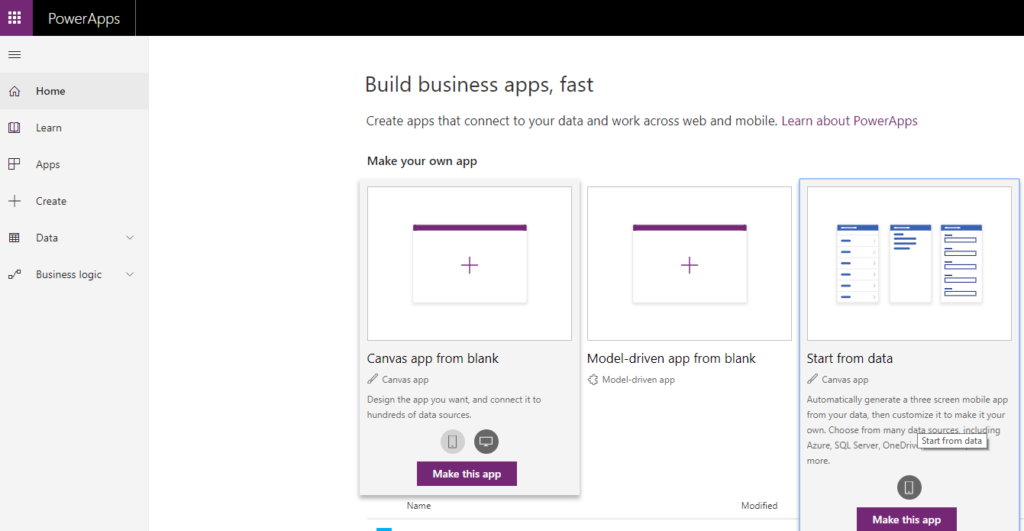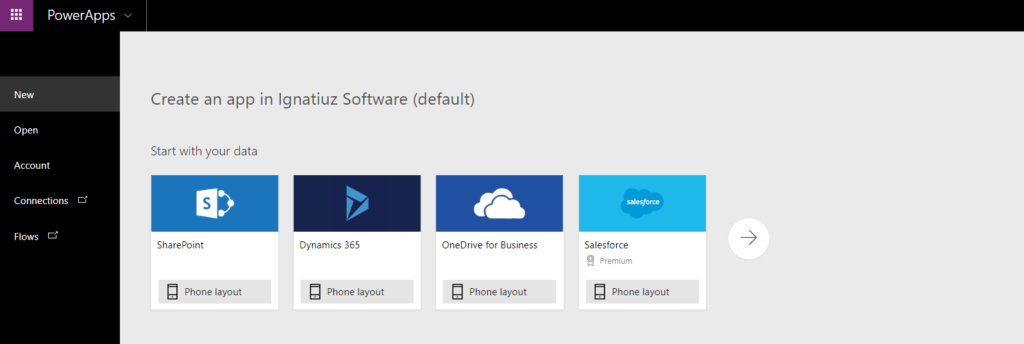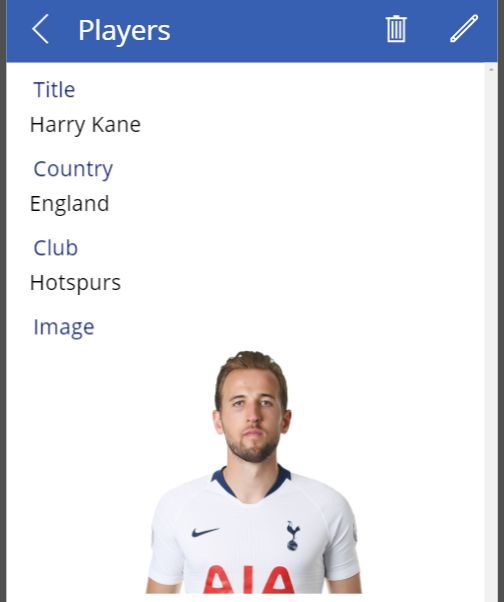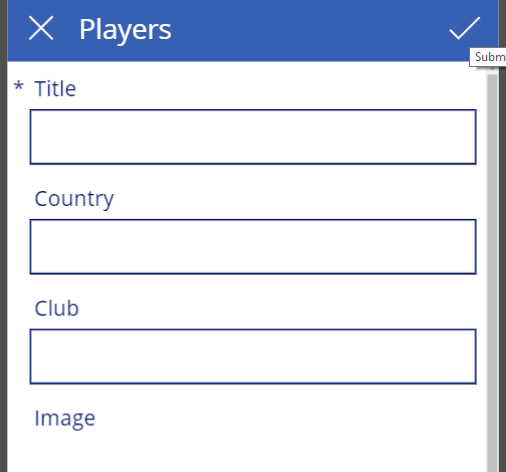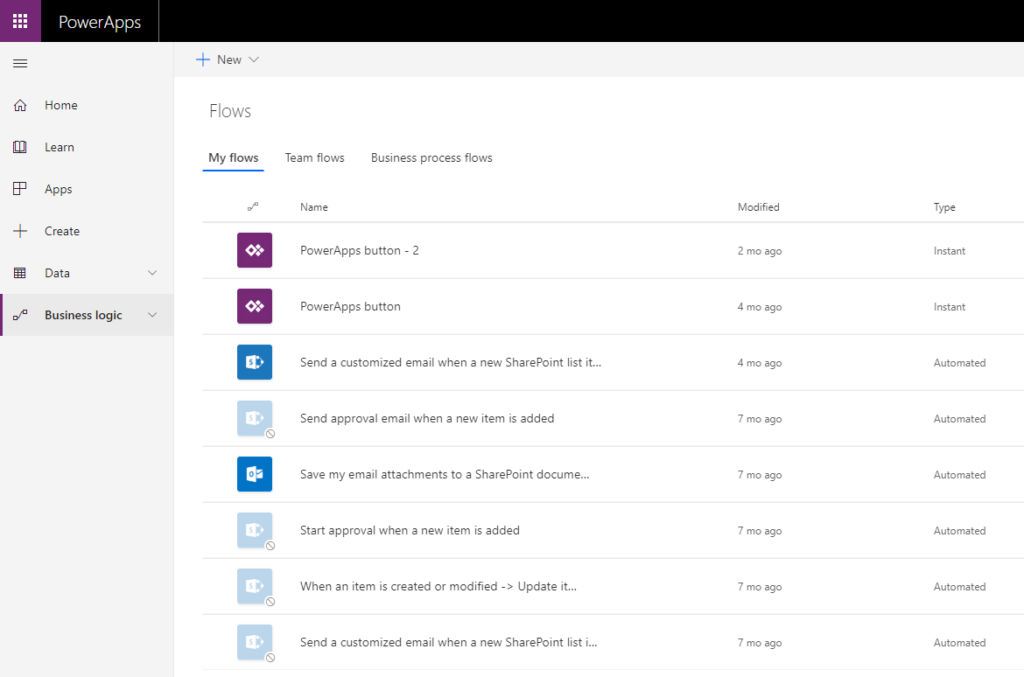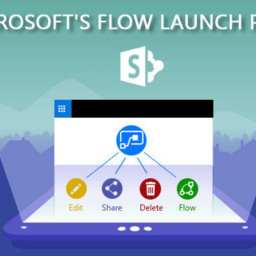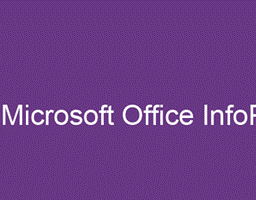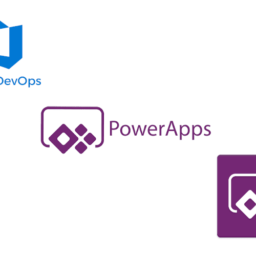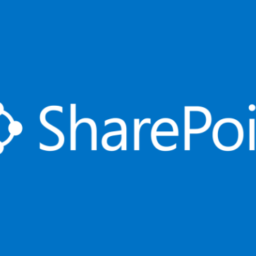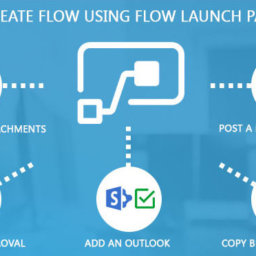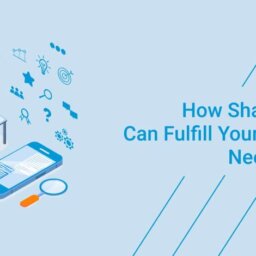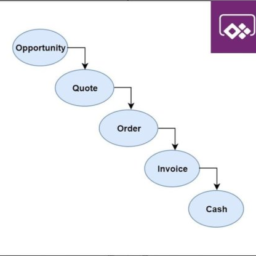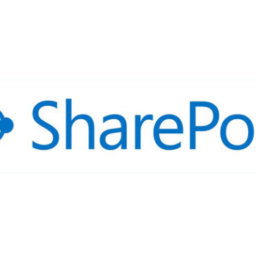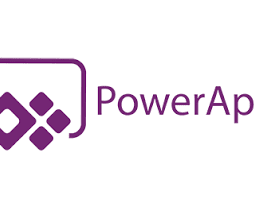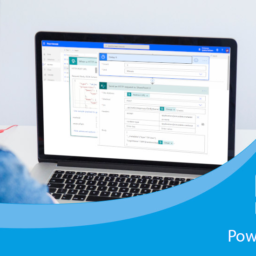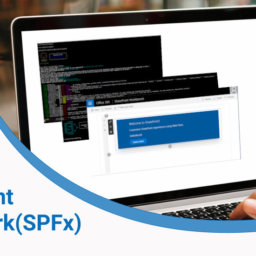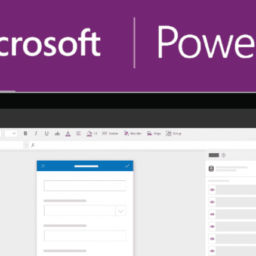Hello everyone, In this blog, we will get to know about what is PowerApps and also PowerApps connectors to data and flows.
Let’s consider what is PowerApps, how it works, and the kind of problems it can solve for your business.
What is Microsoft PowerApps?
PowerApps is an initiative from Microsoft that allows developers and non-technical users to build mobile applications connected to their data. The objective of PowerApps is to enable business users to build new capabilities via apps, not mandatory that the user is an expert in writing codes. Microsoft gives a visual design for PowerApps, with a drag-and-drop functionality and a good look and feel taken from applications like PowerPoint.
PowerApps could be classified into:
- The App itself.
- Connections to the data.
- Flows: Workflows of the app.
The App –
In PowerApps you can create an app automatically for phone, tablet or desktop-based templates based on your data in just a few clicks. The app will be designed automatically to execute some basic functions by default based on the template and data, you can customize them to make them more specialized as per your requirements.
You could also show more about your data in a different interface, Or add more details, like images. If you build or change the app, the app is compiled and runs so you can check what your users will see when they use the app. Along with the ability to customize app templates, you can also create an app scratch to get more flexibility regarding the design and flow of the app.
You could create an app in many ways –
- Canvas app from blank –
Design the app you want, and connect it to hundreds of data sources.
- Model-driven app from blank –
Model your data to create the building blocks of your app, and let PowerApps design the look.
- Start from data –
Automatically generate a three-screen mobile app from your data, then customize it to make it your own. Choose from many data sources, including Azure, SQL Server, OneDrive, Salesforce, and more.
Connectors to data –
When you create an app from a template, PowerApps asks you for a data source which you like to use for your app. You have to use a data source that you have already created on the server. Examples of the data sources are:
A SharePoint list
A SQL Server database
Salesforce
Dynamics 365
Excel workbook And more.
For example, if you wanted to create an app that allowed your users to access your client contacts on their phones and do specific things with that information like creating new contacts, delete, edit the contacts and set up a meeting with them. For example, you could create an app that uses the SharePoint list data (i.e. the client contacts list).
In PowerApp you have to do just a few things to create your basic app. First, you have to select the data connector and then select the data source just after a few clicks your app is generated which will have the three basic default pages –
- First to show you all the data
- Second to show the details of a selected item from the list
- Third to edit your selected item or to add new entries in the data source. Thereafter you can also add more pages and functionality to the app.
First page (all the data is displayed by default) –
The second page (show the details of a selected item)-
Third page (edit your selected item or to add new entries in the data source) –
Flows: Workflows of the app –
Microsoft Flow is the engine operating behind the scene of the apps you create and run. Generally, an app is consist of several automated processes or workflows that are set of commands to perform actions in the app. In a Simple way, an app is a way to develop forms to view, edit and add data to your data source, and Flow is how you can tell your app to do some actions. For example, you could set an workflow to send a mail when a new item is added to the data source.
The very important thing to remind that if you developed an app and want to use it on your device. So first you have to download the PowerApp on your device, you can only use your app under the PowerApp and all the apps developed by you and also shared with you are present in the list on the home page of PowerApp on your device.
A significant move for business apps –
Once your application is ready you can share it with your entire organization, or with a specific team across a browser or mobile device. In recent years, the number of apps we use in our personal lives has seen a huge increase. Think about how many apps you have on your phone to get your work done. Microsoft PowerApps is a step towards enabling businesses to build apps quickly for users.
The Power of PowerApps
Microsoft Power Platform helps unleash the power of Microsoft Power BI, PowerApps, and Power Automate, so you are able to derive data-driven insights. PowerApps refer to a suite of connectors services, apps, and data platforms that help your company develop custom apps that are suitable for the needs of your business. The MS Power platform can help you build apps that offer rich workflow capabilities and business logic, thus helping you transform manual business processes into automated, digital processes. Further, apps created using Microsoft Power platform services have an extremely responsive design and will run seamlessly regardless of whether you use mobile devices, like tablets or phones, or browsers. Building apps with the Microsoft Power Platform is also relatively easy since the person developing the app is not required to write code.
Benefits of PowerApps
Speed:
In a world where businesses are extremely competitive, speed is essential. One of the biggest benefits of using the Microsoft Power Platform is how quickly it enables you to build an app that is fully functional and useful. PowerApps does away with a number of time-consuming tasks that are built into the usual app development process. These tasks are replaced with a drag and drop interface, which facilitates easy app development.
Streamlines development:
Most organizations have a team of professional developers. But, oftentimes, these developers are so busy with other business priorities that you would rather continue using an old app rather than raise a ticket and wait for an extended period of time to have a new one developed. With the MS Power platform, however, new applications can be built and managed in an easy manner.
Apps can be created easily:
With libraries, APIs, objects, and functions, coding to develop an app can be extremely daunting for people who are not familiar with writing code. This is where PowerApps really shines. Users don’t need to have any prior programming knowledge to build apps using Microsoft Power platform services.
It is mobile-ready:
There are numerous sites that work wonderfully well on a desktop or laptop. But, the mobile version of the same sites can be mobile-unfriendly for the user. MS Power platform allows you to build a phone form factor into the interface, so you can be sure that the app you are building will work well on larger screens and mobile devices.
Cost-efficient:
Another amazing benefit of the Microsoft Power Platform is how cost-effective it is. Essentially, you can use PowerApps to build high-quality apps that are intuitive, without spending a whole lot of cash.
How Ignatiuz Can Help You
Microsoft PowerApps is a great way to easily and quickly create efficient and easy-to-use apps for your organization. Being user-friendly and cost-effective, Microsoft Power Platform can help you leverage technology to create apps that will really benefit your business. Our Microsoft Power platform consultants here at Ignatiuz will help you along this journey, and enable you to use the technology in a way that takes your business to greater heights. Being a Microsoft certified partner, we can help you if you wish to use Microsoft Power Platform to build custom apps. Contact us to know more.
